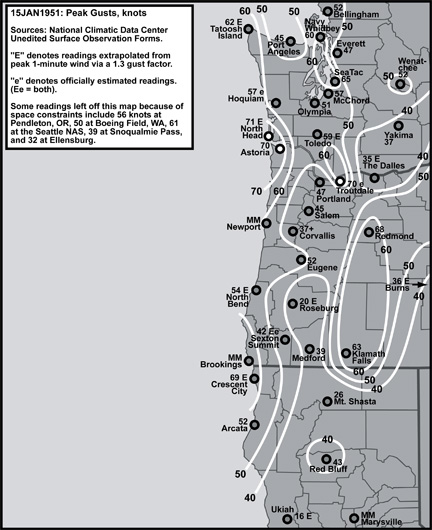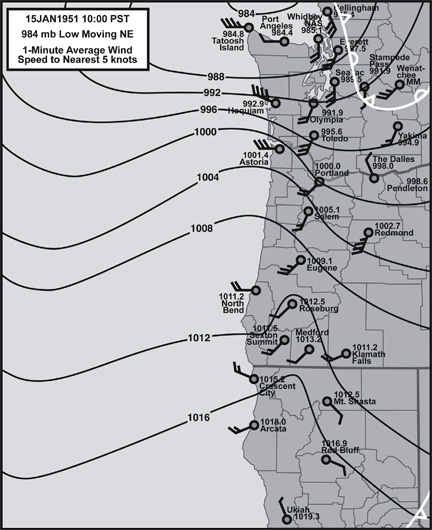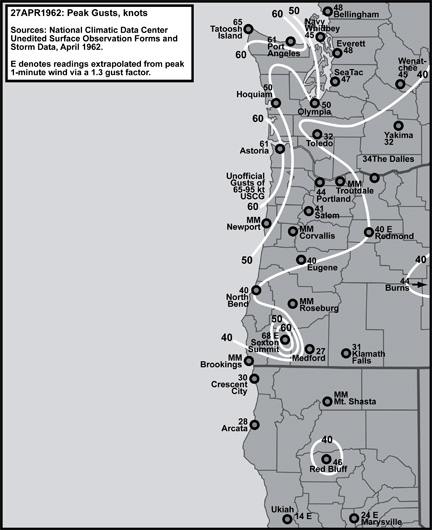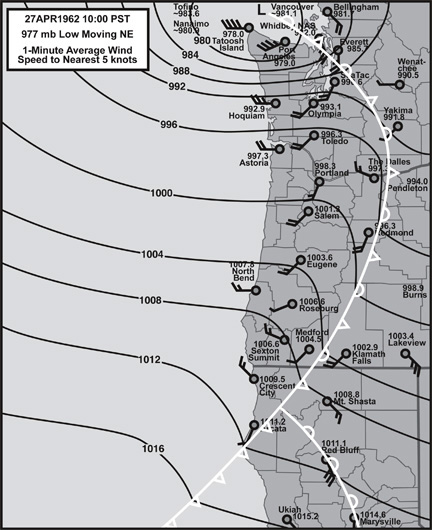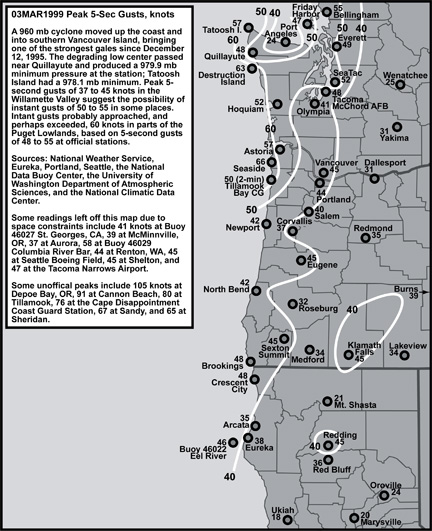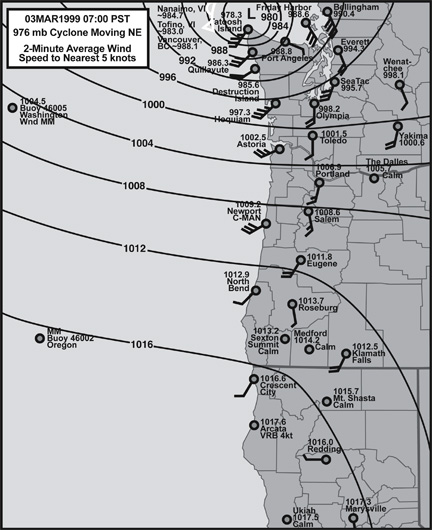A typical track for Class 5 windstorms is northeast, with the low center landing on Vancouver Island just north of Tatoosh Island, WA, and northward in latitude. This brings a Class 5 cyclone's core north of the region of interest, putting all locations in the storm’s most extreme south side. However, given the far north track, regions south of about the central Oregon coast are generally spared the storm's strongest punch. This, of course, depends on many factors, including the cyclone's depth and the strength of the trailing front. For those lows that happen to be tracking more east than north, the Strait of Juan de Fuca can receive a intense westerly gale behind the storm center as the cyclone tracks inland, setting up a more-or-less ideal pressure graident orientation for this kind of surge.
Very steep gradients can set up over Western Washington as these lows move inland, and this region can receive a very widespread gale. Sometimes, under the right atmospheric conditions, a mesolow can develop in the lee of the Olympic Mountains over the North Inland Waters, and this can result in very extreme wind speeds over a very narrow region. Class 4 storms are probably also capable of generating these mesolows. This can significantly elevate winds in the greater Seattle Area, among other regions in the central Puget Sound. Save for the coastal strip, Oregon is largely spared by these storms, due to their distant track. Only rarely does the Willamette Valley experience high-wind criteria gusts (50-knots or higher) from these storms.
Perhaps the most intense Class 5 event was the 21 Oct 1934 windstorm, an event that occurred before a more consistent peak gust record was established by the Weather Bureau (now National Weather Service). An anemometer at the Seattle Airport, located where Boeing Field is today, recorded maximum 1-minute wind speeds of 58 mph during the storm, the highest average wind reading on record for this location. Structural damage from the storm was widespread throughout Washington, and loss of human life was relatively high--with at least 22 fatalaties, this event is among the deadliest.
